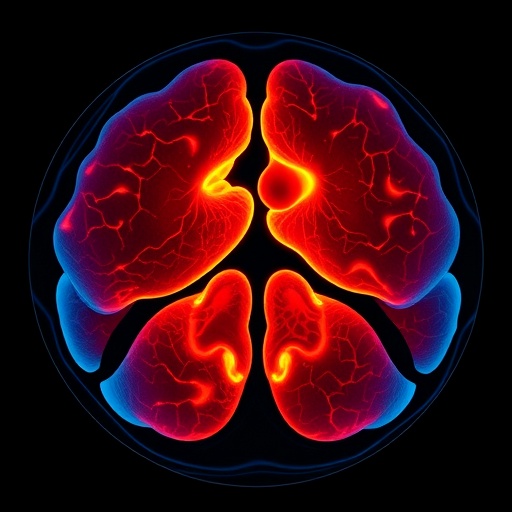Emerging evidence from a comprehensive study conducted by researchers at Texas A&M University School of Public Health highlights the transformative role of physical activity in mitigating depression and sleep disorders among smokers over the age of 40. This investigation delves into the complex interplay between smoking, mental health, sleep quality, and exercise, shedding light on the potential of physical activity to restore well-being to profiles resembling those of non-smokers.
The study meticulously analyzed nationwide data sourced from the National Health and Nutrition Examination Survey (NHANES), which encompasses a robust sample of over 3,000 U.S. adults surveyed between 2017 and 2020. Employing rigorous data and statistical analysis methods, the research team sought to quantify the extent to which adherence to current physical activity guidelines could buffer the negative psychological and physiological impacts associated with tobacco use, with a particular focus on depressive symptoms and sleep abnormalities.
Smokers, irrespective of age, were found to exhibit disproportionately higher rates of moderate to severe depressive symptoms alongside pronounced sleep disorders, confirming prior research that links nicotine consumption with neurochemical disruptions. For individuals aged 40 to 59, the data uncovered an especially stark correlation: those who failed to meet physical activity recommendations not only experienced elevated depressive states but also suffered more frequent sleep disturbances. This confluence of mental and physical decline underscores the complex bidirectional relationship between mood, behavioral health, and circadian regulation disrupted by smoking.
Intriguingly, the protective influence of exercise was quantifiably potent in older populations. Smokers aged 60 years and above who engaged in the recommended doses of moderate to vigorous physical activity witnessed a significant reduction in sleep disorder prevalence, bringing their risk levels in line with non-smokers. This finding elucidates important age-dependent mechanisms that might be leveraged in clinical and public health interventions targeting older tobacco users to enhance quality of life and reduce comorbidities.
The exercise guidelines referenced in this research align with those promulgated by U.S. health authorities, advocating adults achieve approximately 300 minutes per week of moderate-intensity or 150 minutes of vigorous-intensity aerobic activity, or an equivalent combination. These thresholds are well supported by physiological studies demonstrating exercise-induced neurochemical modulations, including increased serotonin and endorphin levels, which are known to alleviate depressive symptoms and promote restorative sleep cycles.
Fundamental neurobiological processes underpin the interrelations observed in this study. Nicotine’s deleterious impact on neurotransmitter systems—such as dopamine and gamma-aminobutyric acid (GABA)—can exacerbate mood disorders and destabilize sleep architecture. Conversely, physical activity amplifies brain-derived neurotrophic factor (BDNF) expression and enhances neuroplasticity, mechanisms that facilitate mood regulation and improve sleep homeostasis. These contrasting effects delineate a biological framework by which behavioral modifications may counteract smoking-related health detriments.
Despite the promising implications of exercise, the research underscores limitations in younger adult smokers aged 20 to 39. Even among those who adhered to physical activity guidelines, a persistent vulnerability to sleep disorders was evident, suggesting that exercise alone might be insufficient to offset the harm associated with intensive tobacco exposure. The complexity of smoking’s impact on circadian rhythm and respiratory function in this cohort calls for multifactorial intervention approaches, potentially integrating smoking cessation programs with exercise regimens and sleep therapy.
The gravity of smoking as a preventable cause of mortality cannot be overstated. Globally, tobacco use is implicated in oncological, pulmonary, cardiovascular, and metabolic pathologies that claim millions of lives annually. In the United States, approximately 20% of adults continue to smoke, perpetuating an urgent public health challenge exacerbated by comorbid mental health conditions such as depression and insomnia. This study’s revelations about mitigating these risks through physical activity offer actionable insights for policy makers and healthcare practitioners alike.
Sleep disorders, including but not limited to insomnia and sleep apnea, afflict about one-third of American adults. These disturbances contribute not only to diminished mental health but also to heightened risk for chronic illnesses, reduced cognitive function, and impaired quality of life. Depression, affecting roughly one in twelve adults, compounds these issues by diminishing motivation and engagement in health-promoting behaviors. The recognition of physical activity as a modifiable factor in this nexus is therefore of paramount importance.
The research pioneers at Texas A&M University—Dr. Taehyun Roh and colleagues Jeong-Hui Park and Tyler Prochnow—along with their international collaborator from Korea’s Kyung Hee University, anchored their analysis in a nationally representative dataset that affords generalizability and robustness to their findings. Their work provides compelling epidemiological evidence that supports incorporating physical activity as a central component of holistic smoking-related health interventions.
Mechanistically, the interconnection between smoking, depression, and sleep involves alterations in hypothalamic-pituitary-adrenal axis functioning, inflammatory cytokines, and autonomic nervous system regulation. Physical activity exerts anti-inflammatory effects, modulates stress responses, and promotes vagal tone, thereby positively influencing these interconnected pathways. Hence, the recommended exercise protocols not only address symptoms but also target underlying pathophysiology.
Ultimately, this research advocates for a dual-pronged public health approach emphasizing both physical activity promotion and smoking cessation. While exercise mitigates significant risks, the study reiterates that it cannot entirely supplant the deleterious effects of tobacco use. A comprehensive strategy integrating behavioral counseling, pharmacotherapy, and lifestyle modification will be essential to achieve optimal mental and physical health outcomes.
In conclusion, for smokers beyond middle age, engaging consistently in physical activity emerges as a critical tool to neutralize some of the adverse mental health and sleep disturbances engendered by smoking. Conversely, younger smokers may require augmented interventions beyond exercise to counteract the entrenched physiological disruptions caused by tobacco. These findings mark a pivotal advance in understanding lifestyle factors that influence the mental and somatic sequelae of smoking.
Subject of Research: People
Article Title: Impact of Physical Activity on Smoking, Sleep Disorders, and Depression Among U.S. Adults
News Publication Date: 17-Aug-2025
Web References:
– Texas A&M University School of Public Health: https://sph.tamu.edu/
– NHANES Data: Centers for Disease Control and Prevention
– Physical Activity Guidelines: https://jamanetwork.com/journals/jama/fullarticle/2712935
References:
– DOI: 10.1177/10901981251362818 (Health Education & Behavior)
Keywords: Mental health, Physical exercise, Smoking, Depression, Sleep disorders, Public health, Neurobiology
Tags: benefits of exercise for mental well-beingdepression rates among older smokersexercise and mental health in older smokersimpact of exercise on sleep disordersNHANES data analysis on smokersnicotine effects on sleep and moodovercoming sleep issues with physical activityphysical activity guidelines for older adultsphysical activity reducing depression in adultssleep quality improvement through exercisesmoking and mental health correlationTexas A&M University research study




